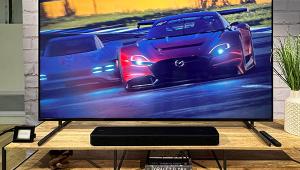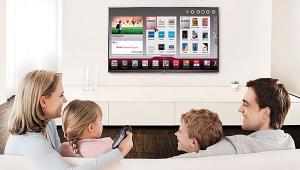Plasma vs. LCD

Hey Man, Where Are your Priorities?
In general, plasma TVs have deeper, richer blacks and better contrast ratio. Because plasma screens are highly reflective glass, plasmas perform best in rooms with some degree of light control, which certainly doesn't describe the showroom floor you're likely to be trying to evaluate them in. This set of strengths (and weaknesses) is why plasmas are a better choice for those whose viewing priorities are watching movies in a darkened room.
On the other hand, as bright as plasmas can be, LCDs are typically much brighter. In addition, they don't go dimmer as more and more of the screen area lights up, as plasmas certainly do due to power supply limitations. In addition, screen materials are used that are much flatter in texture and lower in reflectivity. This makes an LCD show better contrast in a brightly lit environment. Not only does this make LCDs look better vs. plasma on a showroom floor, it also makes LCD a better choice for someone who will be using his/her flat panel in a brightly lit room and/or watches more casual TV or sports more often.
So remember, the LCDs are going to show better contrast and snap in a brightly lit showroom environment. Although LCDs are getting better, don't get fooled into thinking that high contrast image will carry over when you get home and drop the lights for movie night. Similarly, if you see a plasma in a darkened, high-end demo room don't think the picture will be so punchy if you're watching in a bright room during daylight hours.
Myth Busting: Longevity, Motion Blur and Hot Gas About Plasma
There are two common pieces of FUD (fear, uncertainty and doubt) that proponents of plasma and LCD throw at one another. LCD's mudslinging is primarily geared to indicate that you'll be lucky if the life span of your plasma will allow you to get the set out of the store. Plasma's people will do their best to convince you that if you try to watch sports or any other "fast moving" program material that you'll be seeing so many trails you'll swear you're having an acid flashback. Neither is true.
In the case of plasma's longevity, newer panels are typically rated at 60,000 hours to half half brightness. That's almost seven years- if you have your TV on around the clock- until your plasma's light output drops to half of what it is the day it comes home with you. In other words, if these products get even close to their rated life spans we're not at all convinced that this is a solid reason to buy one technology over the other.
Motion blur in LCDs, if addressed at all in sales lit, is summed up as “response time.” This is only partly true. Early LCDs suffered badly from this phenomenon. Objects in motion showed so much blur they'd practically leave psychedelic trails across the screen. Plasma manufacturers are making a point in demonstrations of showing that LCD still has some vestigial blur, while plasma doesn't. While that's true to the letter, this isn't necessarily a deal breaker. The latest LCDs, despite faster and faster response times, are not devoid of motion blur as plasma is, but often they're fast enough for most people not to be bothered by it. You can read more about this here.
One other myth we haven't heard in a while is the classic about plasmas needing gas "recharges" periodically. They don't. So don't buy an extended warranty to cover gas recharges because there's no such thing!
Burn, Baby, Burn?
This one is in LCD's favor and there's no denying it. Plasmas are prone to "image retention," or screen burn if static images are left on-screen too long. But so were the CRTs we all lived with for decades. Many plasmas are now shipping with technological tools to defeat this once it occurs, or reduce the chance of it happening. The best defense is to avoid burn entirely. This might not be easy if you're a heavy gamer, or even an addicted CNN watcher- the stock market ticker tape at the bottom of the screen has burn-in potential, even now that it's more translucent. If this is you, you know who you are and whether you need an LCD to service your habits. But if you're an average Joe who's capable of being just a little careful, don't worry about it. Also, keep in mind that after the first 100 hours or so, it gets a lot harder for any plasma to burn in.
Where Are You Going To Sit?
Our focus here at Home Theater is on dedicated hobbyists who will be sitting in an ideal position, dead center with their TV. But for those of you just shopping for a TV, this might be a more casual affair entirely. While LCDs are getting better, they are still more sensitive to horizontal viewing angle than plasmas are. As you walk to the side you'll notice the LCD's contrast compress, and the colors go out of whack.
If you've got your coach planted far off to the side of where your flat panel's going to be, look harder at plasma.
Price Vs. Pixels
While this is changing practically as I write these words, LCD was earlier to 1080p than plasma and far cheaper at that hallowed pixel count. Although its value is questionable at lower screen sizes, at 46" or above consider 1080p a valuable upgrade worth paying extra for.
- Log in or register to post comments






















































